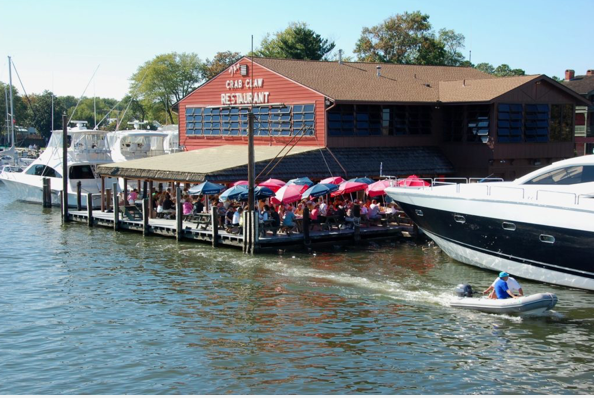St. Michaels, nestled on Maryland’s picturesque Eastern Shore, is a quaint town that exudes charm, history, and a deep connection to the Chesapeake Bay. With its roots tracing back to the colonial era, this gem has evolved into a popular destination for tourists and locals alike. What secrets lie within this idyllic enclave, and how might we ensure its preservation amid growing environmental concerns? This question is particularly salient as climate change continues to pose significant challenges to coastal communities.
As one strolls through the streets of St. Michaels, the vibrant maritime heritage instantly captivates. Historic buildings with their traditional architecture line the charming streets, each with a story to tell. The town’s ebb and flow are intricately tied to the water, establishing an undeniable relationship with the Chesapeake Bay. In fact, St. Michaels was once considered a pivotal shipbuilding center during the 19th century, despite its modest size. The echoes of the past resonate through the charming shops, galleries, and eateries that have taken root here.
What sets St. Michaels apart is not only its rich history but also its commitment to sustainability. The bay has provided sustenance for generations, and now, as climate unpredictability threatens its very ecosystem, the town stands at a crossroads. It invites its visitors and residents to take a hands-on approach to conservation. Perhaps the greatest challenge lies in balancing tourism with environmental stewardship. How can one enjoy the picturesque vistas while actively participating in the preservation of this delicate ecological paradise?
Consider the breathtaking waterfront views. As you gaze across the bay, it’s easy to become entranced by the serene beauty of the landscape. However, it is essential to recognize that these stunning vistas are at risk. Rising sea levels, erosion, and increasingly severe weather patterns threaten the very foundations of St. Michaels. Engaging in eco-friendly tourism is crucial—not merely for the town’s survival but for the wellbeing of the entire Chesapeake Bay region.
In this spirit, St. Michaels has been proactive in fostering environmental initiatives. The town engages in a range of efforts, from establishing protected areas to promoting green practices among businesses. Local organizations often host community events focused on the importance of preserving the bay’s biodiversity. Such endeavors spur dialogue among residents and visitors alike, fostering a collective sense of responsibility for safeguarding this unique ecosystem.
Moreover, the town’s local wildlife plays a critical role in the environmental narrative. The Chesapeake Bay is home to an astonishing array of species, including the iconic blue crab and the majestic osprey. Efforts to protect these creatures extend beyond simple admiration; they encompass habitat restoration, pollution reduction, and advocacy for sustainable fishing practices. By adopting a hands-on approach to wildlife conservation, residents and visitors can contribute to the continuation of these rich natural resources.
To immerse oneself in the landscape is to truly appreciate its beauty. Kayaking, sailing, and paddleboarding allow for an intimate connection with the bay. Imagine gliding through the serene waters, the gentle lapping of waves against your vessel. Yet, while engaging in these activities, one must be attentive to the footprint left behind. Choosing eco-friendly equipment and practices can help maintain the integrity of the bay’s fragile environment. Visitors could pose questions to themselves—how did their choices contribute to the wellbeing of this vibrant ecosystem?
When pondering the preservation challenge, it becomes apparent that education is paramount. St. Michaels boasts numerous museums and centers dedicated to maritime history and environmental awareness. The Chesapeake Bay Maritime Museum, for example, provides engaging exhibits that celebrate the town’s rich heritage while simultaneously enlightening visitors on the impact of climate change. By imparting knowledge, museums serve as catalysts for action, igniting passions for conservation among future generations.
Additionally, local farmers’ markets and eateries emphasize sustainable practices, offering organic and locally-sourced foods that honor the land and its resources. Diners can delight in a seafood dish, knowing it has been caught using sustainable techniques that help preserve fish populations. This commitment to sustainability permeates through the town, making responsible choices accessible to all. As people savor the local flavors, they can reflect on their choices and their implications for the seaside community.
The future of St. Michaels relies heavily on balance. Balancing the aspirations of economic growth with the urgency of environmental protection remains an ongoing challenge. However, the town’s resounding spirit suggests that collaboration and innovation are possible. As community members join forces, new ideas will emerge, forging a path that allows St. Michaels to thrive while retaining its historical essence.
A visit to St. Michaels offers not only breathtaking scenery but also a call to action. It encourages each person to reflect on their personal impact on the environment, prompting them to engage in thoughtful choices that contribute to the preservation of the community. As the tides shift, both literally and metaphorically, St. Michaels stands as a testament to the power of unity in confronting the multifaceted challenges posed by climate change.
As you embark on your journey through this town, remember the tales woven into each quiet corner. Engage, learn, and contribute. Each small action can provoke a ripple effect of change, thereby forging a community that honors the past while safeguarding its future. St. Michaels is indeed a gem of the Eastern Shore, but it is also a microcosm of the larger fight for environmental sustainability. What role will you play in ensuring it continues to shine?
